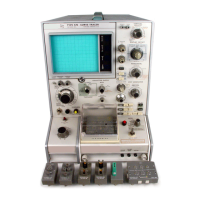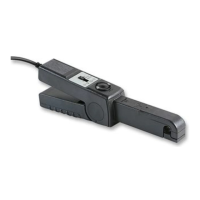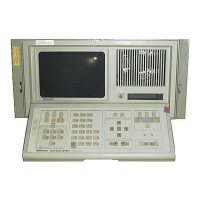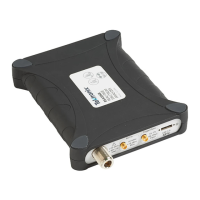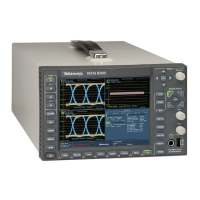Triggering
CSA7000B Series & TDS7000B Series Instruments User Manual
3-91
Overview Control elements and resourcesTo trigger based on transition time (Cont.)
Set to trigger
when
The instrument compares the pulse edge of the trigger
source against the transition time (slew rate) set by the upper
and lower threshold settings and the delta time set in the
window. To select whether to trigger on edges with transitions
times (slew rates) faster than or slower than that set by these
controls, do the following step:
7. Touch Transition Less Than or Transition Greater Than:
H Less Than triggers w hen the transition time is
greater than the time you set.
H Greater Than triggers when the transition time is
less than the time you set
If you select Transition Greater Than and the instrument does
not trigger, it may be because the pulse edge is too fast
rather than too slow. To check the edge speed, switch to
edge triggering. Then trigger on the pulse edge and
determine the time the edge takes to travel between the
levels set in the slew rate Thresholds menu. The instrument
cannot transition trigger on pulse edges that traverse
between threshold levels in 600 ps or less.
Also, to reliably transition trigger, a pulse must have a width
of 8.5 ns or more. A pulse of less width may trigger on the
wrong slope or not trigger at all. Switch to edge triggering
and check the pulse width if you can’t transition trigger as
expected.
Logic qualify
the trigger
8. To logic qualify the trigger, see Logic Qualify a Trigger
on page 3--102.
To set mode
and holdoff
9. Mode and holdoff can be set for all standard trigger
types.
See To set holdoff on page 3--74 and To select
trigger mode on page 3--71 for mode and holdoff
setup. To learn more about trigger mode and
holdoff, see Trigger Modes on page 3--65 and
Trigger Holdoff on page 3--66.
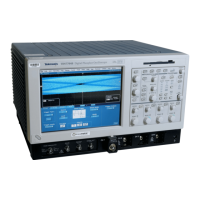
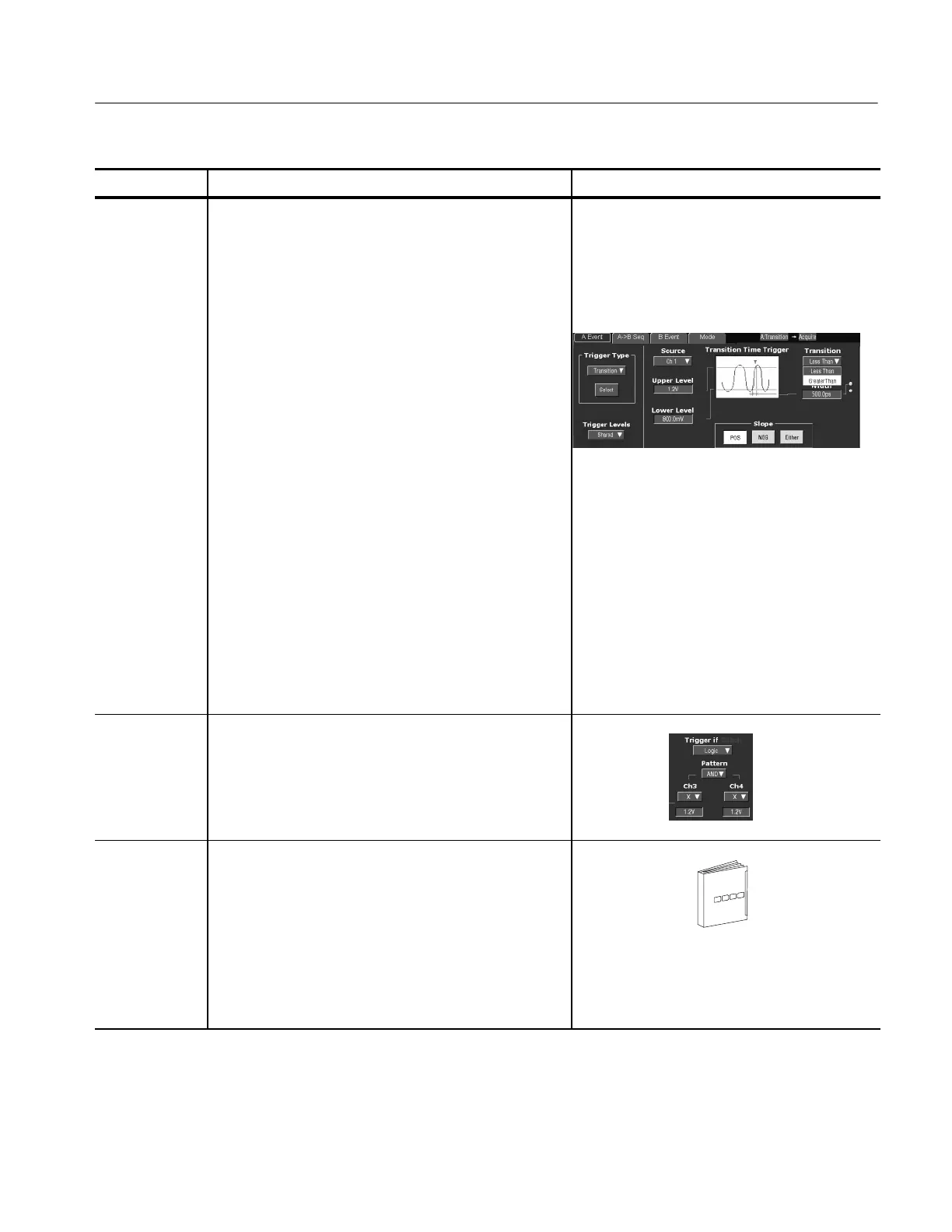